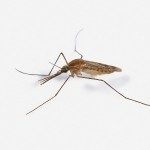Link to Pubmed [PMID] – 18847318
Vector Borne Zoonotic Dis. 2009 Oct;9(5):531-41
Aedes aegypti is responsible for the transmission of arboviruses. The Yellow Fever, Dengue and Chikungunya viruses are transmitted to the vertebrate host by injection of infected saliva during the blood meal of its vectors. Saliva contains different components with various biochemical activities; anti-hemostatic, angiogenic, inflammatory, and immunomodulatory. This work compares the sialomes of three Ae. aegypti colonies (Rockefeller, PAEA, and Formosus), where the repertoire of salivary proteins from these colonies was analyzed by a proteomic approach. This study indicated that major proteins were detectable in the three colonies. However, differences in the abundance of some saliva proteins have been observed between the three Ae. aegypti colonies.



